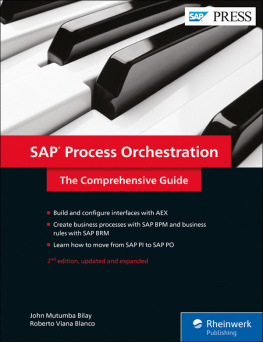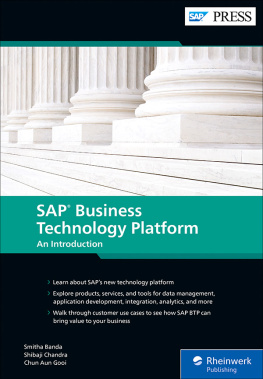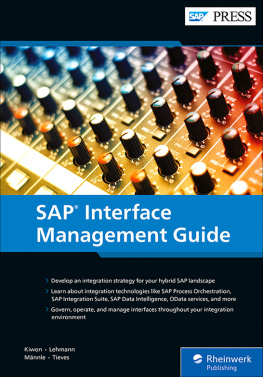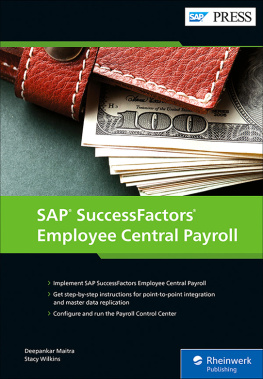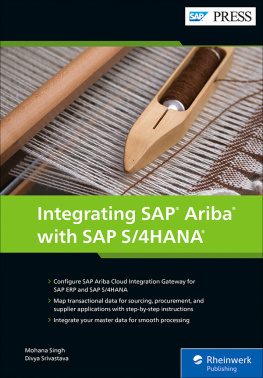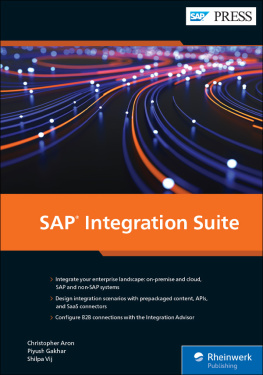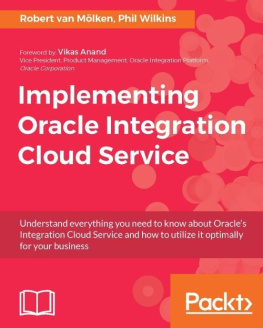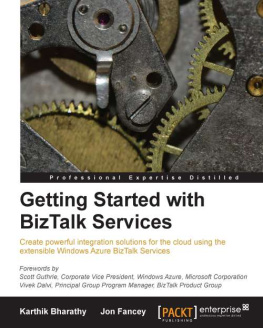As the years go by, youve likely found that your system landscape has become more and more complex. As the complexity increases, so do the challenges you and your organization face, from needing to ensure smooth integration between the various systems and components to managing business processes in an efficient manner. This is where this comprehensive guide to SAP Process Orchestration comes in!
Whether youre starting fresh or migrating from SAP PI, SAP PO gurus John Bilay and Roberto Viana Blanco have got you covered. Not only do they provide you with in-depth information on SAP PI, SAP BPM, and SAP BRM (and more!), but they have also created detailed, step-by-step exercises to help you apply your new knowledge. It has een my pleasure to work with them both, and I think we (mostly them) have produced a wonderful book.
What did you think about SAP Process Orchestration: The Comprehensive Guide ? Your comments and suggestions are the most useful tools to help us make our books the best they can be. Please feel free to contact me and share any praise or criticism you may have.
Notes on Usage
This e-book is protected by copyright . By purchasing this e-book, you have agreed to accept and adhere to the copyrights. You are entitled to use this e-book for personal purposes. You may print and copy it, too, but also only for personal use. Sharing an electronic or printed copy with others, however, is not permitted, neither as a whole nor in parts. Of course, making them available on the Internet or in a company network is illegal as well.
For detailed and legally binding usage conditions, please refer to the section .
This e-book copy contains a digital watermark , a signature that indicates which person may use this copy:
Notes on the Screen Presentation
You are reading this e-book in a file format (EPUB or Mobi) that makes the book content adaptable to the display options of your reading device and to your personal needs. Thats a great thing; but unfortunately not every device displays the content in the same way and the rendering of features such as pictures and tables or hyphenation can lead to difficulties. This e-book was optimized for the presentation on as many common reading devices as possible.
If you want to zoom in on a figure (especially in iBooks on the iPad), tap the respective figure once. By tapping once again, you return to the previous screen. You can find more recommendations on the customization of the screen layout on the .
Foreword
In recent years, SAP has released a number of products to cover the roles of enterprise service bus, business rules engine, and business process engine. In 2012, SAP launched another product: SAP Process Orchestration. SAP Process Orchestration combines the power of multiple products (such as SAP Business Process Management [BPM], SAP Process Integration [PI], and SAP Business Rules Management [BRM]) into one single product running on the Java stack. This consolidated product brings numerous advantages to assist organizations in automating their business processes and their integration requirement needs, including (but not limited to) the following:
- Consolidated installation and monitoring
- Simpler landscape
- Features that support business process automation and integration
- Bridging the process modeling gap between the business and IT
- Lower cost of ownership
A few books have been written in the past to cover different aspects of the SAP middleware landscape, but none of these other books has taken a holistic approach that covers all three main components of SAP PO in a single book. That is what this practical combo book, SAP Process Orchestration: The Comprehensive Guide , does. The book explains how all the tools available in the SAP PO offering can be used to model different kinds of integration scenarios. The covered scenarios range from simple ones that only run on SAP PI, to more complex ones that utilize SAP BPM to coordinate complex flows and SAP BRM to enable flexible business process customizing.
In addition to providing a detailed explanation of the tools mentioned previously with the support of step-by-step examples, this book also explores some of the latest features released by SAP. The authors of the book have a lot of experience and a deep understanding of the subject matter, and they have taken the opportunity to address many other commonly asked questions, including the following:
- How do you migrate from a dual stack to single Java stack installation?
- How do you set up the landscape for transporting Java objects?
- What are the best practices in the SAP PO space?
- What is the possible future of the SAP middleware products combined with SAP Cloud Platform Integration?
- What should you consider when setting up an SAP PO landscape?
John and Roberto have gone above and beyond by providing exercises and solutions to help you practice and gain hands-on experience. This book is a must-read for any SAP integration consultant who wants to gain a deep understanding of the topic and to be able to support SAP PO implementations on an outstanding level.
Michal Krawczyk
SAP Mentor
SAP PI/SAP PO book author
Eight times SCN Topic Leader in SAP PI/SAP PO
SAP Integration Expert at int4.com
Acknowledgments
We would like to thank all the people who have contributed and supported us throughout the process of writing this book. We would like to start by thanking the team at SAP PRESS for all their support throughout the project. We are very thankful for your support and team spirit. You have made it all possible. This team includes Hareem Shafi and Meagan White.
Our humble and thankful recognition goes to Rojo Consultancy B.V. for making the project possible and to our colleagues who have contributed to a few chapters and supported us with their encouragement. Together, we make a great team. We would also like to acknowledge many others we did not mention by name for their direct and indirect support and interest in the book.
John Mutumba Bilay
I would like to thank Michal Krawczyk for his encouragement and for being a wonderful contributor to the SAP integration community.
I could not have asked for a better coauthor and friend than Roberto Viana. It is a true honor to work alongside you on this project that is so special to both of us.
A big thank you goes to my lovely wife Hermien for her loving support, patience, and encouragement. Thank you to Ralph, Luc, and Ruben for their understanding and for allowing me to spend weekends and evenings writing the book.

